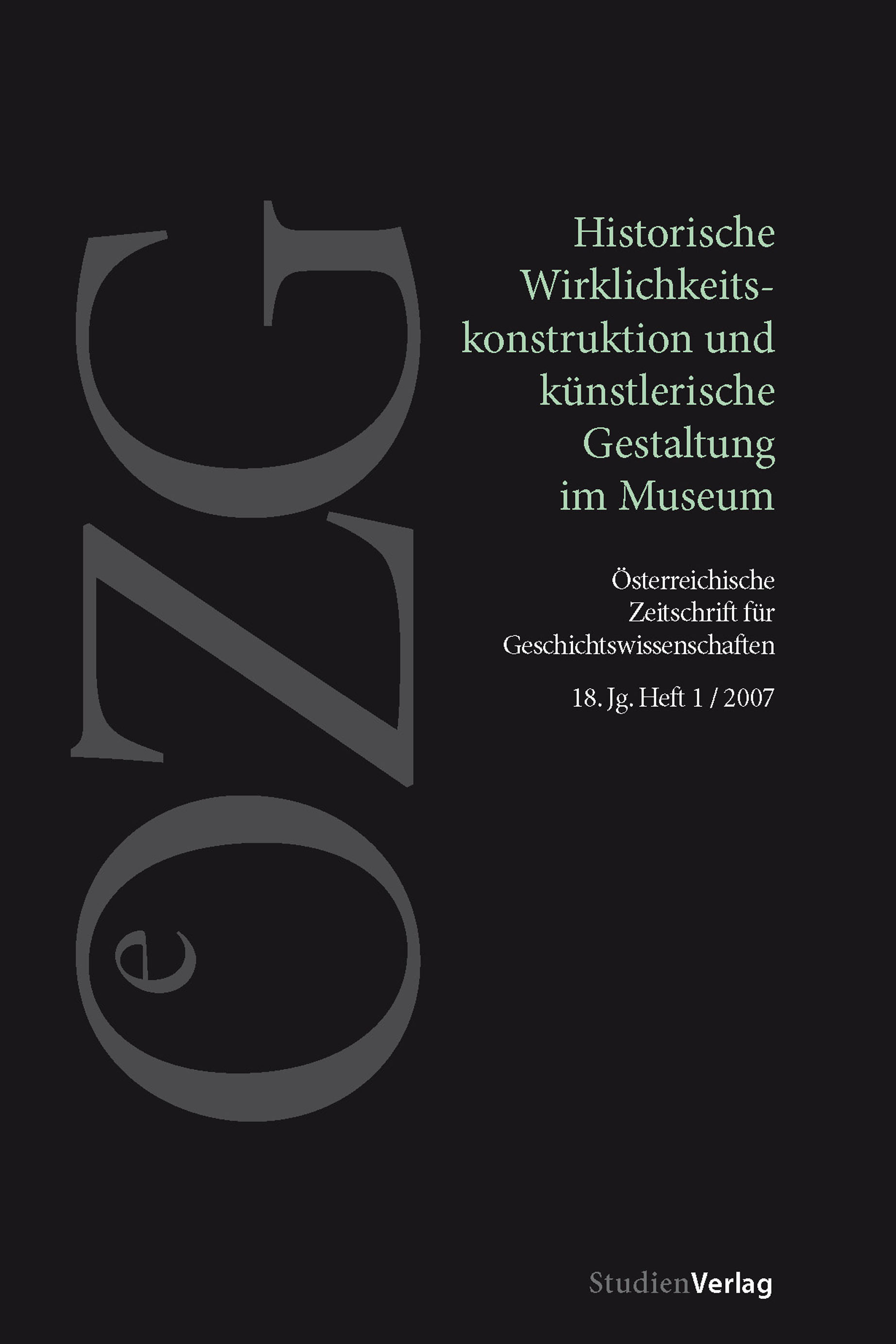Das Vokabular der Dinge
DOI:
https://doi.org/10.25365/oezg-2007-18-1-2Abstract
The capability of things to refer to a reality beyond themselves is given to all objects which come into the sphere of human perception. However, once an object has gone through the process of becoming a museum piece, its character as a sign is entirely its own. Based on this ascertainment, the analysis of conveying meaning to museum objects often happens through the formation of analogies to the medium of language. But, in light of Saussure’s language theory, the difference between objects which function as signs and linguistic signs becomes clearly apparent. The most essential difference in this respect is that the linguistic sign connects a signifier to a signified, while the object in its concrete form always shows several signifiers. Therefore, with a thing, several significant elements accumulate to a conglomeration of signs. The one who communicates in the medium of objects sees himself therefore confronted with the difficulty of not knowing with certainty to which signs the receiver will react and consequently has to do a lot of work to make sure that his intended signs come to the attention of the receiver. The primary methods used to explain meaning are the choice of objects and their arrangement in a room for they form the basis of the essential purpose of the museum as being a spacious place where visitors can pass through in order to see a sense in the objects. These methods are supplemented by the use of secondary museum pieces such as models, replicas, reconstructions or depictions. However, since many facts can only be clearly expressed in the medium of language, it is almost always necessary to use a linguistic addition in order to clearly define the contents which should be conveyed by the things chosen. The very necessity of this can be rated as further evidence for the fundamental difference between the linguistic sign and the sign which is expressed by an object.


